Both the General Grabber APT and the General Grabber ATX are although all terrain tires, the ATX is more aggressive off the two as it provides you with better off road capability, so why its that? Let’s dig in.
The General Grabber ATX basically came after it’s variant AT2, and with the newer version, the tire now is updated with the shoulders of it’s mud terrain variant, the X3, while the middle stays AT2 (all terrain). So you can say it’s a hybrid tire built on an all terrain platform in a way.
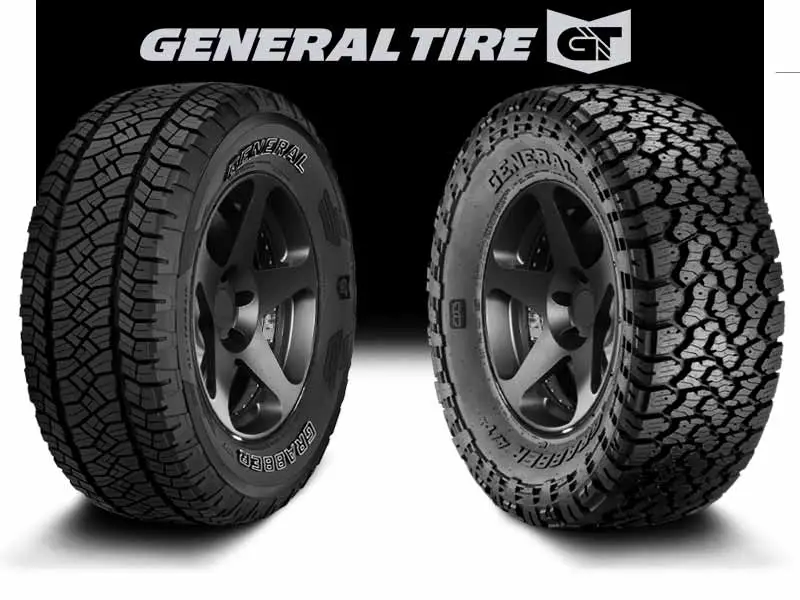
Let’s check out both of these tires starting things off with their tread pattern.
Table of Contents
Things Their Tread Tells:
General Grabber APT
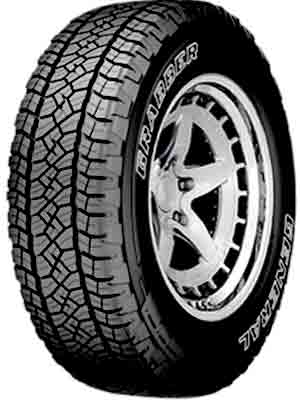
General Grabber ATX
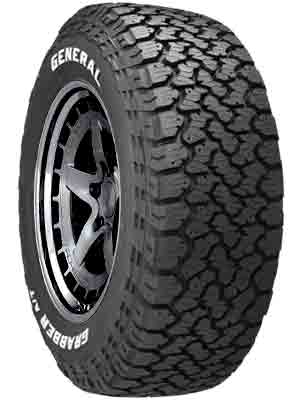
The General Grabber ATX offers 3 unique central blocks which form an interlocking design. The tire looks very similar to BF Goodrich KO2.
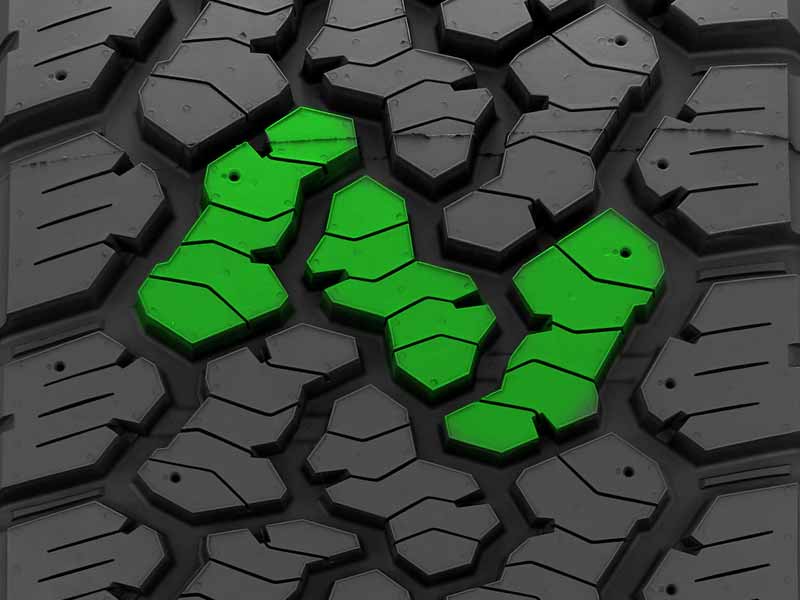
All these blocks have full depth rectilinear sipes and traction notches.
On the other side the General Grabber APT shows a much more on road optimized design where all blocks are closer together comparatively.
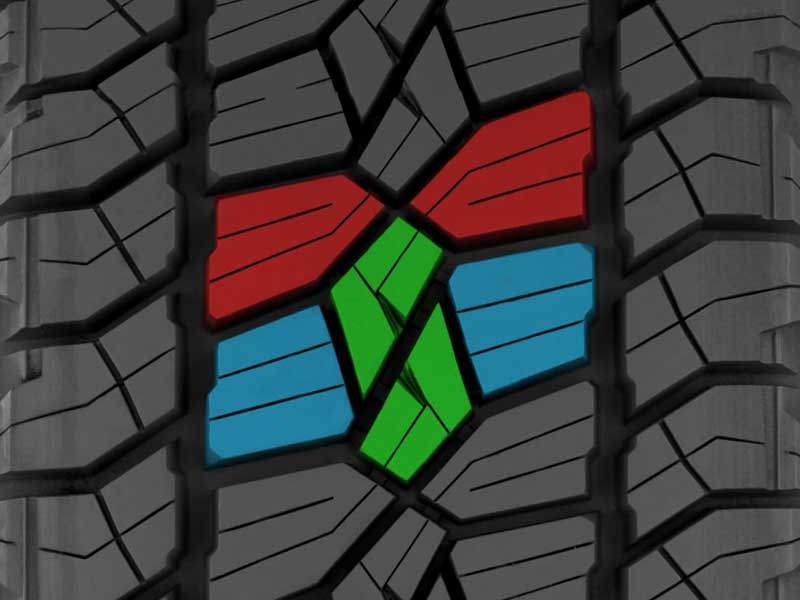
Here the tire makes 3 unique sets of blocks which repeat throughout the tire, making 2 wider outer longitudinal channels.
All these blocks have sharp edges (especially the green highlighted ones in the middle), while the others are seen with offsets and chamfered sides.
The central blocks have unique feature of having traction notches but other than that, they are equipped with same siping seen everywhere else.
If we move towards the shoulder blocks, the General Grabber ATX with more aggressive sides provide you with a staggered design.

All these look alike (expect for the serrated edges), these studable shoulder blocks also have notches on their inner edges and deep slits on the outer, where they also make aggressive sidewall lugs.
On the other side, the General Grabber APT offers a more closed up design as expected, but the blocks are also staggered here and they also make sidewall lugs, though not as aggressive.
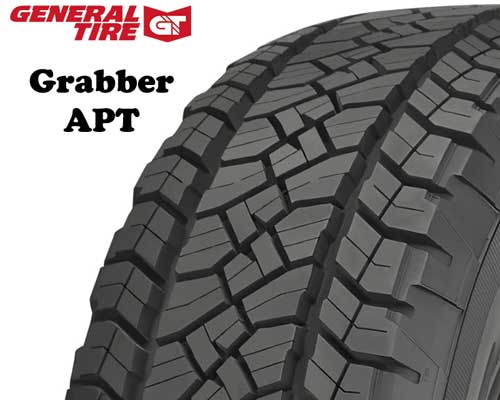
All blocks on Grabber APT have slanted longitudinal slits in them along with rectilinear sipes.
On Road Performance:
On road performance is mostly considered by analyzing the tire’s performance on wet and dry roads, where those factors are further divided in to grip, steering response, handling and in case of wet roads, hydroplaning.
The General Grabber APT overall shows a slightly upper hand in all these areas, which is no surprise, as the tire is very less aggressive in comparison, with a more closed up blocks arrangement which provide better rubber contact with the surface.
| Tests: | Grabber APT | Grabber ATX |
| Dry Braking | 149 ft | 151 ft |
| Dry Handling | 96 s | 97 s |
| Wet Braking | 200 ft | 204.7 ft |
| Wet Handling | 81 s | 82 s |
However, its still surprising to see, how little the General Grabber ATX being an all terrain tire has to compromise on road, as you can see in the data above, there’s a very little difference.
The Grabber ATX actually provides a good contact patch from the shoulder blocks, and here it’s staggered design provides the lateral aid, while it’s claw shaped sipes provide circumferential grip.
These sipes offer shoulder blocks with flexibility, which then provides better stability.
Similarly on wet conditions, the tire provides better float speeds, as with wider grooves, and a network of interconnected channels, the tire features very good water evacuation. So with greater resistance to hydroplaning, there is less burden on sipes to wipe water away, and this results in a very good overall wet traction.
But keep in mid, that, both tires don’t have good enough wet traction overall, when compared to other tires. Falken Wildpeak AT3w for example outperforms both of these tires in this area. That’s because although both tires provide full depth sipes, they are not effective, as they don’t form a wave like pattern which interlocks more and provides blocks with better flexibility.
Sipes are just slits which suck in the water. That’s all what they are. So with an interlocking design, these sipes don’t stiffen up even under high pressure, during sharp turning, or extreme braking, for example.
Also, one more thing, both General Grabber tires have a stiffer compound as well, so the rubber composition don’t give the sipes and blocks as much freedom.
Fuel economy & Wear:
Both tires are good in the wear department overall, they are both equipped with Duragen technology that allows a very long lasting tread.
Both tires are light in weight considering their competitors in the market, and with stiffer rubber composition, these tires although show up with more rolling resistance values, they are not going to wear off too easily.
Surprisingly, the General Grabber ATX is slightly lighter in weight overall (on average), so out of both, this tire shows better efficacy in the wear department.
The tire also has the advantage of more tread depth, so with more rubber it takes longer to get worn off.
But still you get 60k miles warranty on both of these tires.
General Grabber ATX is one of the most long lasting all terrain tires that you get, just adding this here.
But same can’t be said about the fuel economy, even for the Grabber APT, though it’s better here in comparison.
Both tires have a lot of rolling resistance, so the average MPG is going to go down slightly.
Mud, Dirt and Gravel:
All these off-road terrains demand self cleaning abilities in a tire, as otherwise, a packed with mud tire for example would just slip and not move forward (as there would be no friction).
Now, General Grabber ATX, besides providing wider tread voids also have staggered shoulder blocks and sidewall lugs. Both act as mud scoops, and they try to throw back the mud to provide forward momentum. That’s why the tire provides better mud traction in comparison.
On gravely roads, the tire’s massive stone ejectors missing in Grabber APT, ensures the grooves remain clean at all times, where on APT, the stones get stuck in, easily.
And although both tires are cut resistant, the lodged stones/gravel always damages the tread (this is also another reason why ATX does better with wear).
Traction on Rocks:
On rocks, the General Grabber ATX provides significant difference in terms of overall performance. The interlocking design where the grooves make interconnected channels, the tire is able to grip from all sides.
The tire also has the advantage of staggered shoulder blocks and although, overall lateral traction component is not better on both of these tires, it’s still better on Grabber ATX, especially on rocks.
Moreover, unlike the Grabber APT, which does not provide sidewall lugs, the Grabber ATX features very aggressive ones, and when pressure down (to a lower PSI/bar levels), the tire provides better footprint on the rocks, which translates in to a powerful grip.
Side Note: If you didn’t get that, search “sidewall flexing”, you’ll know why ATX’s sidewall lugs provide traction.
In terms of sidewall protection, the General Grabber ATX has the advantage of having thicker lugs, but other than that both offer same kind of internal structure.
Both tires have 2 ply polyester casing with 2 steel belts on top, which are reinforced with 2 ply poly-amide, so both get 2 ply sidewalls.
Winter Traction:
Both of these tires are overall great on snow and qualify for 3 peak mountain snowflake rating. They show up with good overall braking, acceleration as well as handling performances on this terrain.
Still both of these tires can use lateral traction component on snow as well. So yes, the cornering on these tires would not impress, as they provide you with limited feedback (compared to other tires with 3pmsfr).
But since General Grabber APT provides a slightly softer rubber composition, it was a little better on ice, compared to Grabber ATX. The closed up tread pattern of the tire and the notches in the middle provide better gripping on these tires.
But the plus point for Grabber ATX is that it offers stud-able tread blocks, so you can achieve better icy traction with that.
So in a way it’s another win for ATX.
To Conclude:
Both tires are great overall, but still if you are staying off road most of your time, go with an all terrain Grabber ATX. On the other hand, if you staying on highways, go with a more on-road oriented General Grabber APT.
The good things about these tires include wear (they provide a long tread life), dry traction (amazing handling performances), and traction on snow (both have 3 peak mountain snowflake ratings).
But keep in mind that they are not going to impress on wet roads, and they consume more fuel with their higher rolling resistance values. Also the General Grabber ATX is less comfortable out of the two, and is louder as well (which gets worse with wear).


